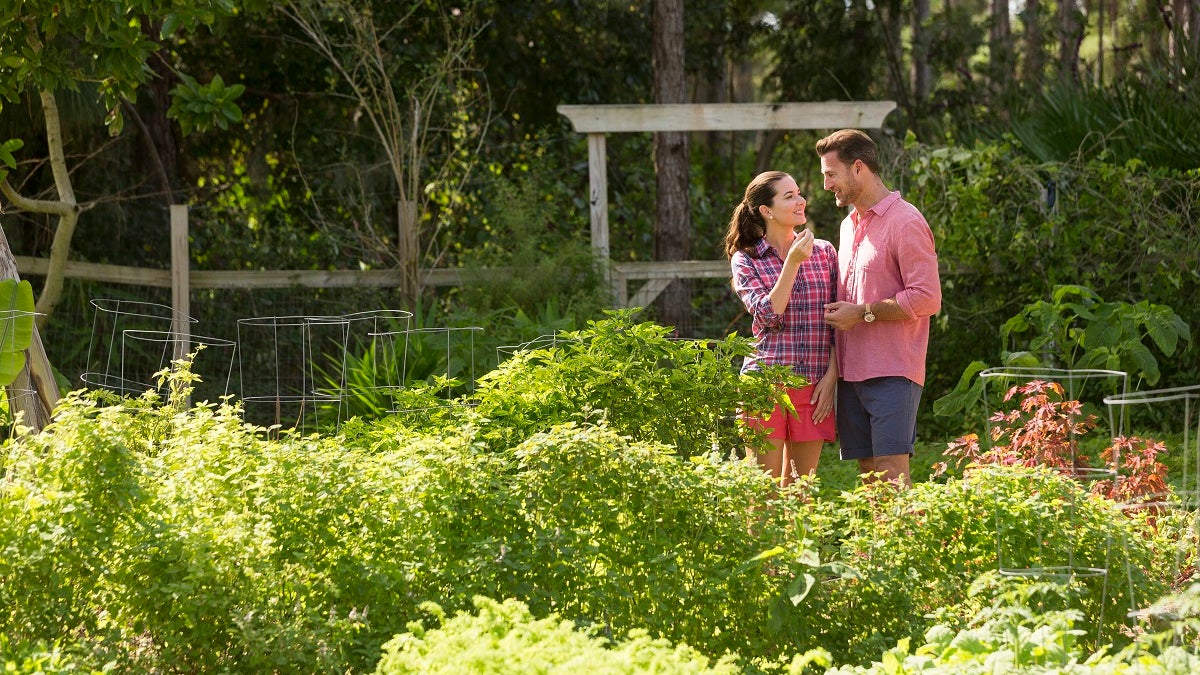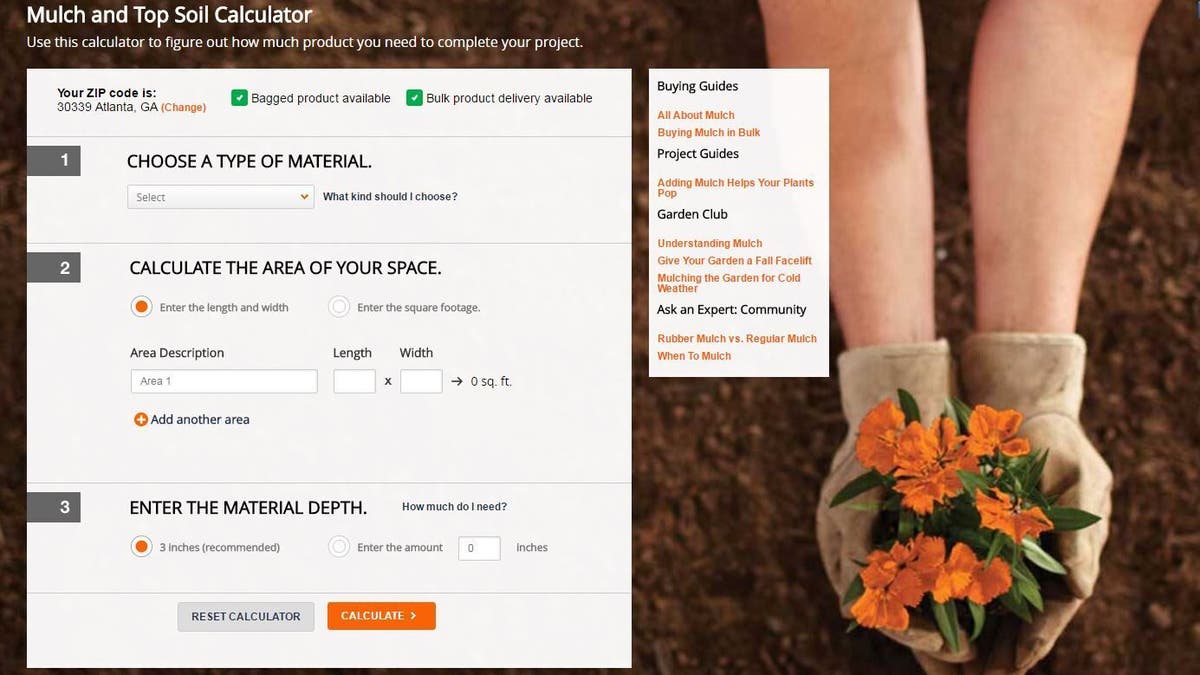
(Whisper Creek Farm at Grande Lakes Orlando)
Rome wasn’t built in a day, and roma tomatoes don’t just pop up overnight without a little labor.
Planting a successful garden can take weeks of planning before you even put the first seed in the ground. But with key preparation, it won’t be long before you’re topping your salads with fresh veggies and herbs from your own backyard.
Here are five things you can do in advance to keep the garden gods happy (and ensure you’re in favor with the flavor gods too).
1. Really get to know your soil.

(Courtesy of The Home Depot)
“Soil health is plant health is human health," Alexandra Rosenberg, a farmer who also forages and ferments her own foods, tells Fox News. She gardens by this motto. The first thing to do, says Rosenberg, after removing the year’s accumulated debris, roots and weeds, is test your soil’s profile since it's the foundation for your food. Most nurseries and home and garden stores sell DIY soil tests. “In urban areas, soils often contain contaminants so it makes sense to build raised beds and start with organic soil,” says Craig Jenkins-Sutton, president of Topiarius—an urban gardening company in Chicago.
If you still opt to grow with what Mother Nature gave you, you can make your own soil more nutrient-rich by adding organic material like compost or manure. Ground-up eggshells are also popular for boosting soil’s calcium content. Mix and aerate the soil with a tool like the Ames 4 Tine Forged Cultivator. Not sure how much mulch or soil you’ll need? Danny Watson, an associate at the Midtown Atlanta Home Depot store, recommends aspiring gardeners use the store's free Mulch and Top Soil Calculator.
Finally, make sure you test your soil’s drainage time to avoid drowning your future plants. “Dig a hole about 12 inches deep and 12 inches wide,” says Pierre Daval, executive chef at the Chicago Marriott Lincolnshire Resort, who maintains a two-acre farm on the hotel property. “Fill the hole with water and allow it to drain for 12 hours. Then, fill it again. It should be fully drained within 3-4 hours. If it takes any longer, you will have to build trenches to help with drainage.”
2. Get selective about seeds.

(The AMES Companies)
The final product pictures on seed packets can look promising, but if you don’t know what can realistically thrive in your climate, it’s easy to set yourself up for disappointment. Lynn Anderson, a Los Angeles based health advocate who runs her own naturopathy practice specializing in wellness and nutrition, recommends utilizing the USDA’s Plant Hardiness Zone Map to determine which crops and varieties are suitable for your region’s latitude and elevation. You can also ask around at local farmers’ markets and garden centers, or seek out information on garden club websites, to find out which produce is most popular.
When it's time to purchase seeds, consider heritage or heirloom seeds which are all the rage right now according to Danny Zoucha, an avid organic gardener. “They go back to the seeds your great-great-grandma used, and they’re easy to order online,” says Zoucha. They’re typically more expensive, but the end result, such as vibrant rainbow colored asymmetrical tomatoes, is much more fun to look at and usually has a more flavorful taste than generic produce.
3. Draw a gardening map and consult it.

(Chicago Marriott Lincolnshire Resort)
If it doesn’t receive at least six hours of sunlight a day, it’s not your spot. “Take photos of your yard every hour to track the sun,” advises Zoucha. “It won’t be 100 percent accurate since the sun will change angles depending on the season, but it will give you a good idea of where to target.”
Gena Lorainne, horticulturist and planting expert at Fantastic Gardeners, recommends mapping out your garden in advance, paying attention to taller plants like pole beans and corn, which have the potential to cast shadows that block the sun from reaching smaller plants.
Make sure you have a water source close by and group plants with similar water needs together. “You’ll have more luck if everyone in the group is thirsty for the same amount at the same time,” says Charlie Capps, director of gardening at Windowbox.com. Some plants have a tendency to outgrow their allotted space, Capps notes.
“Zucchini has a way of multiplying exponentially to the point where you can’t give it away,” says health reporter and home gardener Karen Owoc. She once made the mistake of planting a pumpkin patch for her kids. It ended up taking over her entire garden.
4. Work Your Inside Advantage

(Chicago Marriott Lincolnshire Resort)
If you want a head start on celebrating your first harvest, start your plants indoors before moving them outside-- after the final frost, of course. Juan Carlos Daetz, a home design expert at Max Warehouse, says it’s best to start your indoor seedlings, under grow lights, around late February or early March. Pots work great for larger plants, but for smaller seedlings, go green by using recycled empty egg cartons.
In addition to starting seedlings, start learning the art of composting. “Creating your own compost is an easy and effective way to organically fertilize your soil,” says John Janucik, executive chef at JW Marriott Orlando, Grande Lakes’ which uses ingredients from its own garden. Keep a container on your kitchen countertop so you can collect scraps like banana peels, egg shells and coffee grounds. Instead of rotting in a black bag or disappearing into a garbage disposal, these remnants can be a free, healthy way to feed your food.
5. Consider Companion Planting

(Whisper Creek Farm at Grande Lakes Orlando)
When it comes to gardening, you never have to go it alone. “If you want to succeed with your garden, you’ll need all the help you can get, including from other plants,” says Lorainne. For example, companion plants can distract pests or similarly, attract beneficial bugs like pollinators.
To determine the growth compatibility of plants, consult a resource like Windowbox.com’s free Companion Planting Chart or Lowe’s’ Grow Together app. “Not all plants play nicely together,” says Lester Pool, a master gardener at Lowe’s. “So, the app’s plant tag system helps users avoid putting succulents with moisture-loving plants, or shade-loving plants next to plants that thrive in the sun.”